Cult Objects
In which Norm revisits BARBARELLA, BLACKHAT and TREMORS 2: AFTERSHOCKS now that they've all been released in new 4K editions from Arrow Video.
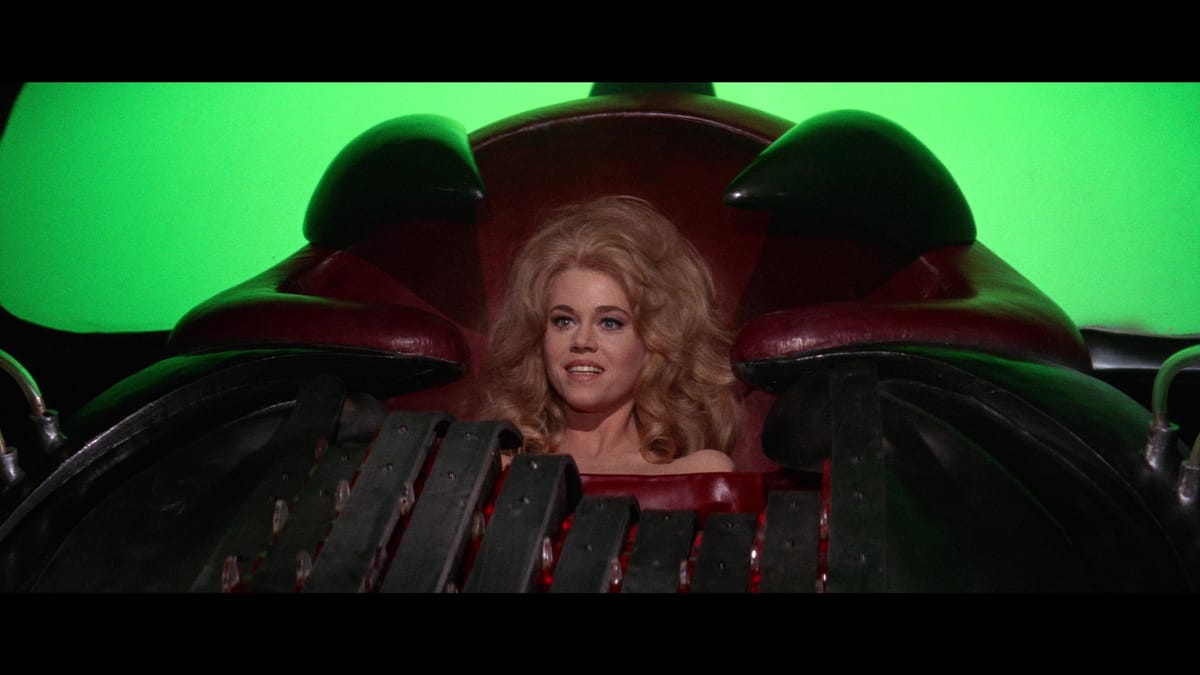
If you’re a label that specializes in cult films, you’re going to make some choices that will annoy and confuse people. It’s baked into the mission statement: Every title you release will have a limited audience, after all.
I mean, I’m old enough to remember the huffing that surrounded the Criterion LaserDisc release of Byron Haskin’s Robinson Crusoe on Mars, a fairly goofy sci-fi adventure which the label admitted up front was only being released (in an excellent widescreen special edition that was eventually upgraded to DVD and Blu-ray) because it was a favorite of the late Saul J. Turell, president of Janus Films.
Certain completists were actually irked by the idea that the film would be up on their shelves alongside their platters of Kubrick and Bergman and Kurosawa so as not to break the spine continuity. In fairness, the resentment of having to pay $125 for a movie you didn’t especially value probably played into it as well – not that anyone actually had to buy the thing, of course.
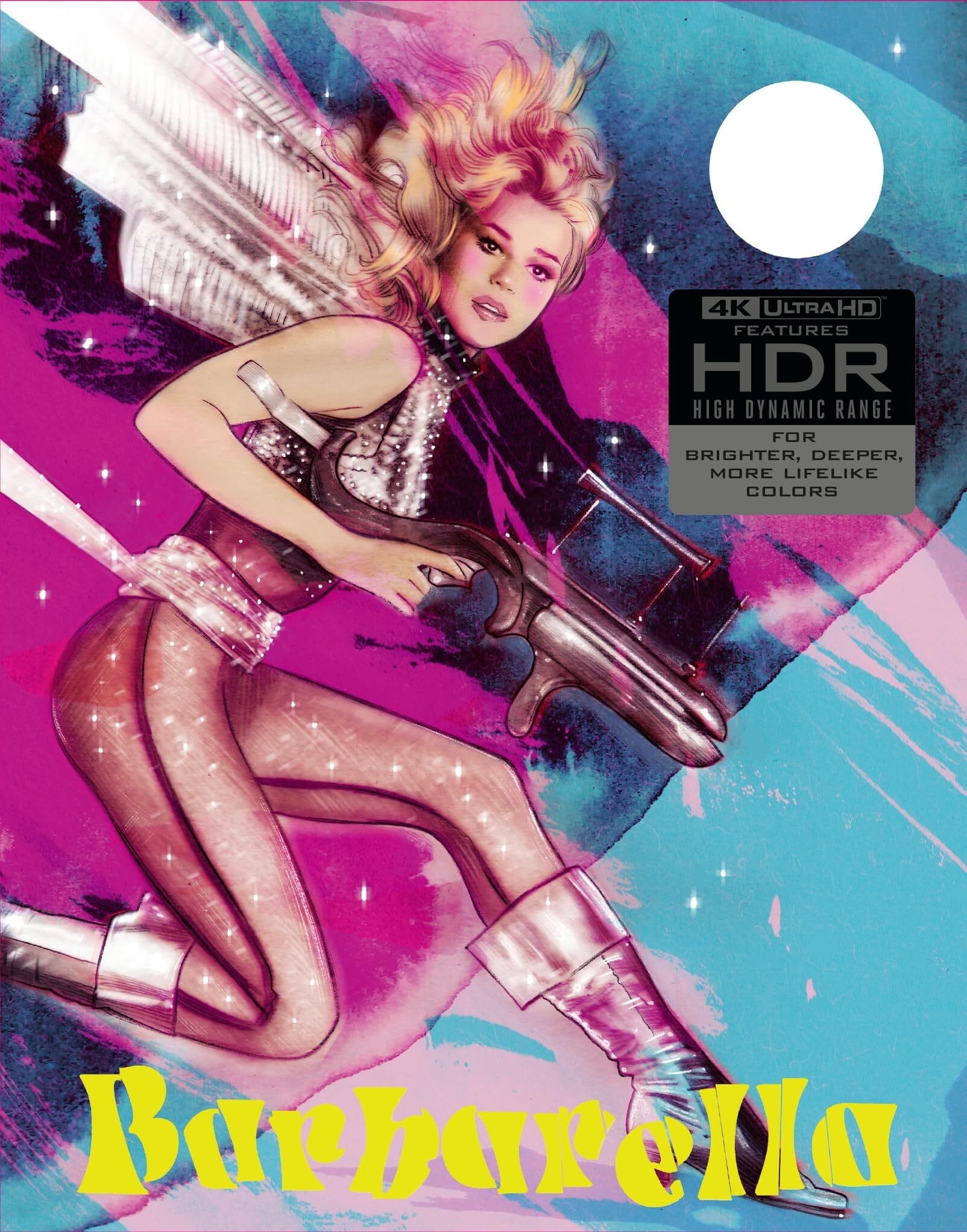
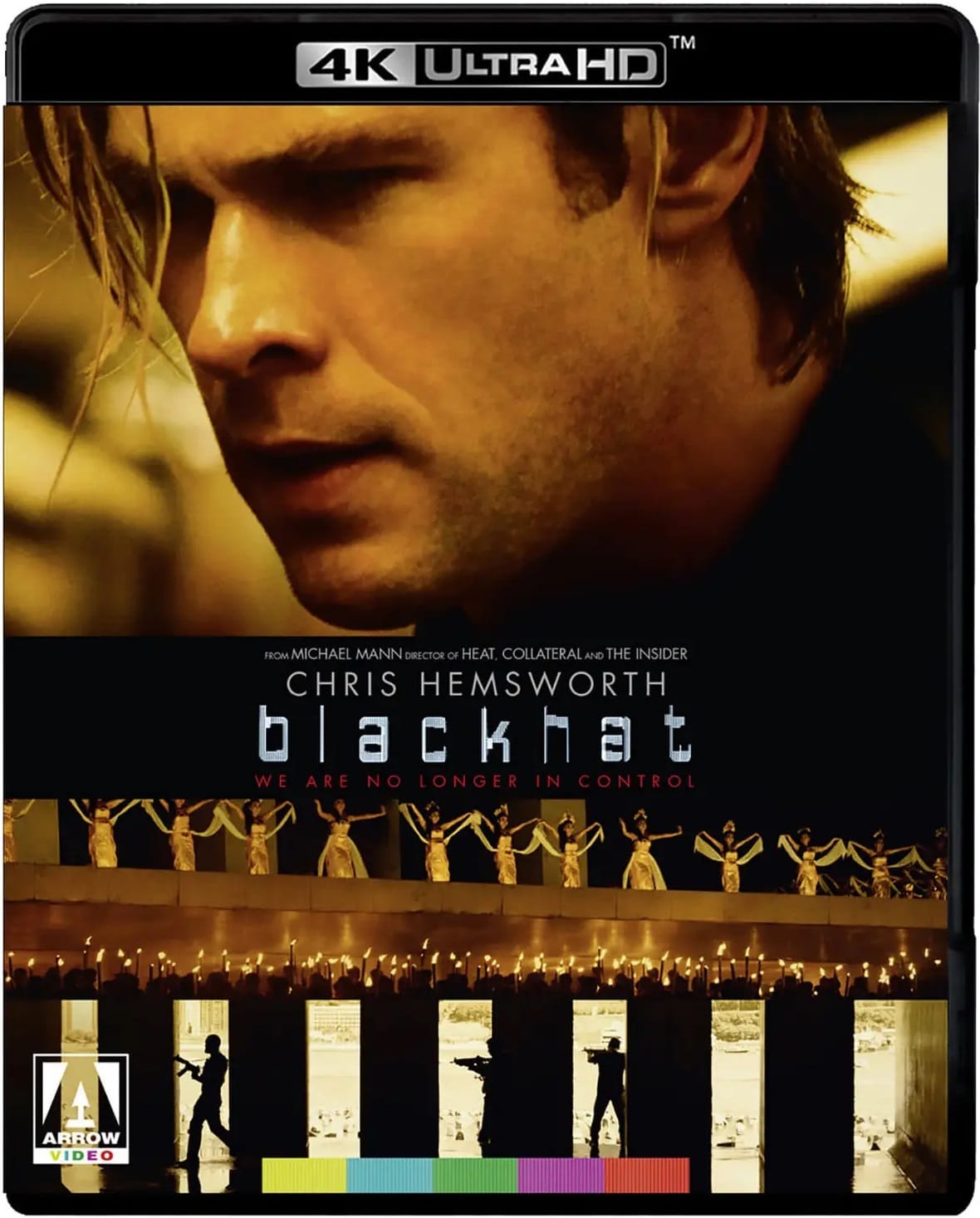

And the same goes for the three new 4K special editions released this week by Arrow Video: Barbarella, Blackhat and Tremors 2: Aftershocks. You are under no obligation to buy any of them, but the discs you don’t want will be very exciting to someone else – and priced a lot more reasonably, too.
Each film gets the full restoration treatment, accompanied by a mixture of new and archival special features. They’ve all been available on disc before, but this is the first time any of them has been released on UHD in North America. (Separate Blu-ray editions are also available, if you haven’t made the jump to 4K.) And revisiting them all after however many years, I was surprised to discover how much more I got out of … Barbarella.

I first saw Roger Vadim’s 1968 space opera in 1977, when Paramount re-released it in the wake of Star Wars for a quick buck. (That’s when the studio added the meaningless subtitle Queen of the Galaxy, which has been left off the Arrow release.) The studio trimmed the incidental nudity to get a PG rating, but couldn’t get away from the leering, lascivious tone that permeates every frame. It was boring: I was nine, and just wanted more starship battles. Obviously I missed some stuff.
As a result, I’ve long dismissed the picture as an expensive, leering farce – an adaptation of a salacious French comic strip made by people who didn’t really understand the material and were determined to condescend to it with silly costumes and cheesy effects. I still think I’m right, but now I see that as a strength of the movie, rather than a flaw.

Barbarella is ridiculous, but in exactly the right way, and that’s all thanks to Jane Fonda. She was apparently miserable during the production, struggling with bulimia and a fraying relationship with Vadim, but you’d never know it from the film: Her unerring straight-woman performance makes sense of the whole thing.
Barbarella may be the best space ranger in the universe, or whatever – the president of Earth calls her when scientist Durand Durand and his civilization-collapsing Positronic Ray go missing, after all – but she’s also a complete innocent, blundering into each new planet with no idea what she’s doing or how anything operates. She’s constantly asking people what this thing does or where that tunnel leads, which I think might have been co-writer Terry Southern’s version of innuendo.

But Vadim wasn’t a big innuendo guy; he just went straight for it, and so in addition to her general ignorance our hero is also utterly innocent in the ways of her own body – a deviation from the source material, where Barb would cheerfully bed anyone, anytime, anywhere – which lets the film employ the standard porn narrative of a beautiful naif learning the pleasures of the flesh from a series of mentor figures. (Southern had also written the definitive pornographic parody of Candide, after all.)
Thus, Barbarella is repeatedly sidetracked by horny dudes who want to bang the space lady – but Fonda makes it fun rather than creepy or seamy, charging into each scene with a bright-eyed enthusiasm that lets us know she’s in on the joke of the movie, even if her character very much isn’t. She throws around the script’s convoluted nonsense about sex pills and invisible keys with practiced ease, because Barbarella’s greatest skill is apparently the ability to happily go along with whatever’s already happening in the room. Once again, that’s a porn narrative – jeez, just look at what Milo O’Shea’s eyebrows are doing. That guy knows what’s going on.

Another thing I didn’t really appreciate at the time is the film’s visual expanse. Barbarella is a profoundly silly film, but Vadim and his cinematographer Claude Renoir (yep, one of those Renoirs) spared no expense in building its world. The Cinecitta studios are their playground, with producer Dino De Laurentiis enabling their every indulgence in much the same way he would with Mike Hodges’ Flash Gordon a decade or so later. But where that film is absolutely heaving with sexual energy, sublimated and otherwise, Barbarella feels strangely chaste, as if – like its eager protagonist – it doesn’t really know what to do with all the flesh available to it. It should bring the whole thing down, but instead it winds up feeling ... endearing. I’ve still never seen anything like it.

Arrow’s 55th anniversary release – available in separate 4K and Blu-ray editions – is a two-disc set that stands as one of the label’s best. The feature is presented on its own disc, in a truly revelatory restoration; the film looks cleaner and more vibrant than I’ve ever seen it, its colors and textures almost tactile. The massive sets are enjoyable as their own ridiculous, incredible things, never mind what’s going on in them, while the miniature work is rendered almost too clearly; in several shots, Barbarella’s ship looks like a Balsa wood model of itself – which is exactly what it was. Audio is available in the original English and French mono (Fonda did her own dubbing for the French track, walking so Jodie Foster could run), as well as a new Atmos remix that expands the movie’s soundscape into your surround speakers without reshaping it in the slightest. That’s a good thing, but it can’t help but point out how entirely unnecessary the new mix is in the first place. The feature disc also includes a wide-ranging audio commentary from Tim Lucas, an LPCM isolated score track, and the alternate opening and closing credits produced for the re-release in 1978.
The bulk of the special features are stuffed into a companion Blu-ray disc, starting with a 20-minute talk from Glenn Kenny – which was supposed to be an introduction, but wound up so long and densely detailed that Arrow’s repackaged it as a stand-alone featurette, “Another Girl, Another Planet”. “Barbarella Forever!” is an on-set featurette shot by Paul Joyce that’s extremely of its time (sections are scored with flute, for crying out loud) but does offer candid footage of Fonda and Vadim on and off the set – including an interlude in which the star “takes time off” to make lunch for her husband – as well as some peeks into the makeup and costuming process and a look at Fonda and David Hemmings shooting their “sex” scene.
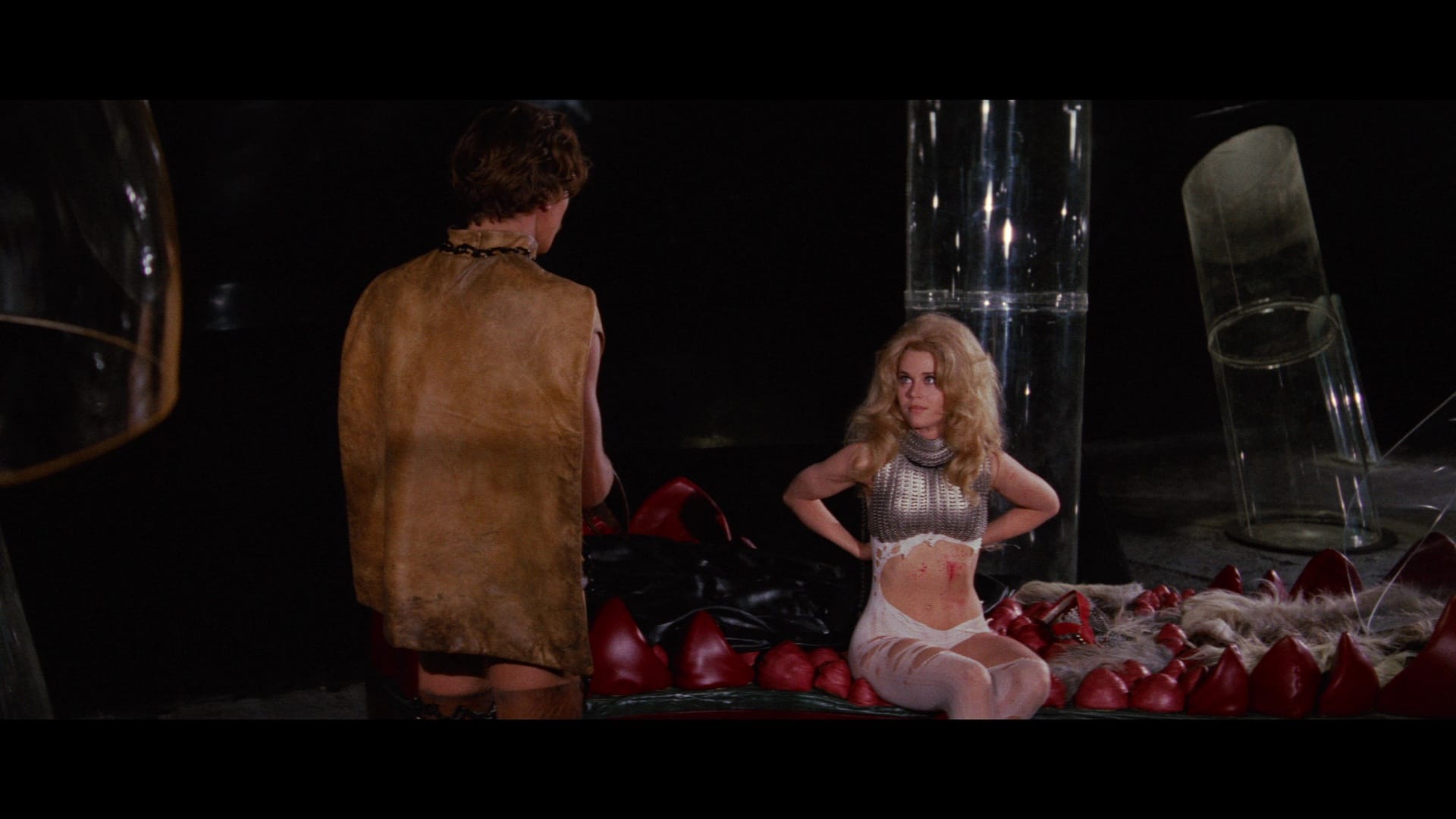
A more comprehensive look at the production comes through “Love”, a two-hour discussion of Barbarella by Lucas and his fellow super-nerd (sorry, “cultural historian”) Stephen Bissette presented as a Zoom conversation with occasional visual references. The rest of the extras are more granular: “Dress to Kill” is a half-hour look at Jacques Fonteray’s costumes with film fashion scholar Elizabeth Castaldo Lundén, while “Framing for Claude” offers a conversation with camera operator Roberto Girometti. “Tognazzi on Tognazzi” lets Ugo’s filmmaker son Ricky discuss his father’s work on the film, and “An Angel’s Body Double” spends nearly half an hour with Fabio Testi, who did indeed double for John Philip Law on the shoot. (These two segments are presented in Italian with English subtitles.) There’s also Eugenio Ercolani’s video essay “Dino and Barbarella”, and a marketing gallery that includes the trailer, TV and radio spots, and a few dozen stills. I had a great time with all of it, and while the idea of a Criterion-worthy special edition of Barbarella may still seem ridiculous, that’s exactly what Arrow has produced. It’s a dazzler.
They can’t all be gems, though, which brings me to the Blackhat special edition. I was curious to revisit Michael Mann’s 2015 cyberthriller just as Ferrari rolls into theaters, but … well, Blackhat is still Blackhat, an empty and entirely derivative programmer from a filmmaker who’s already told three or four far better versions of the story.
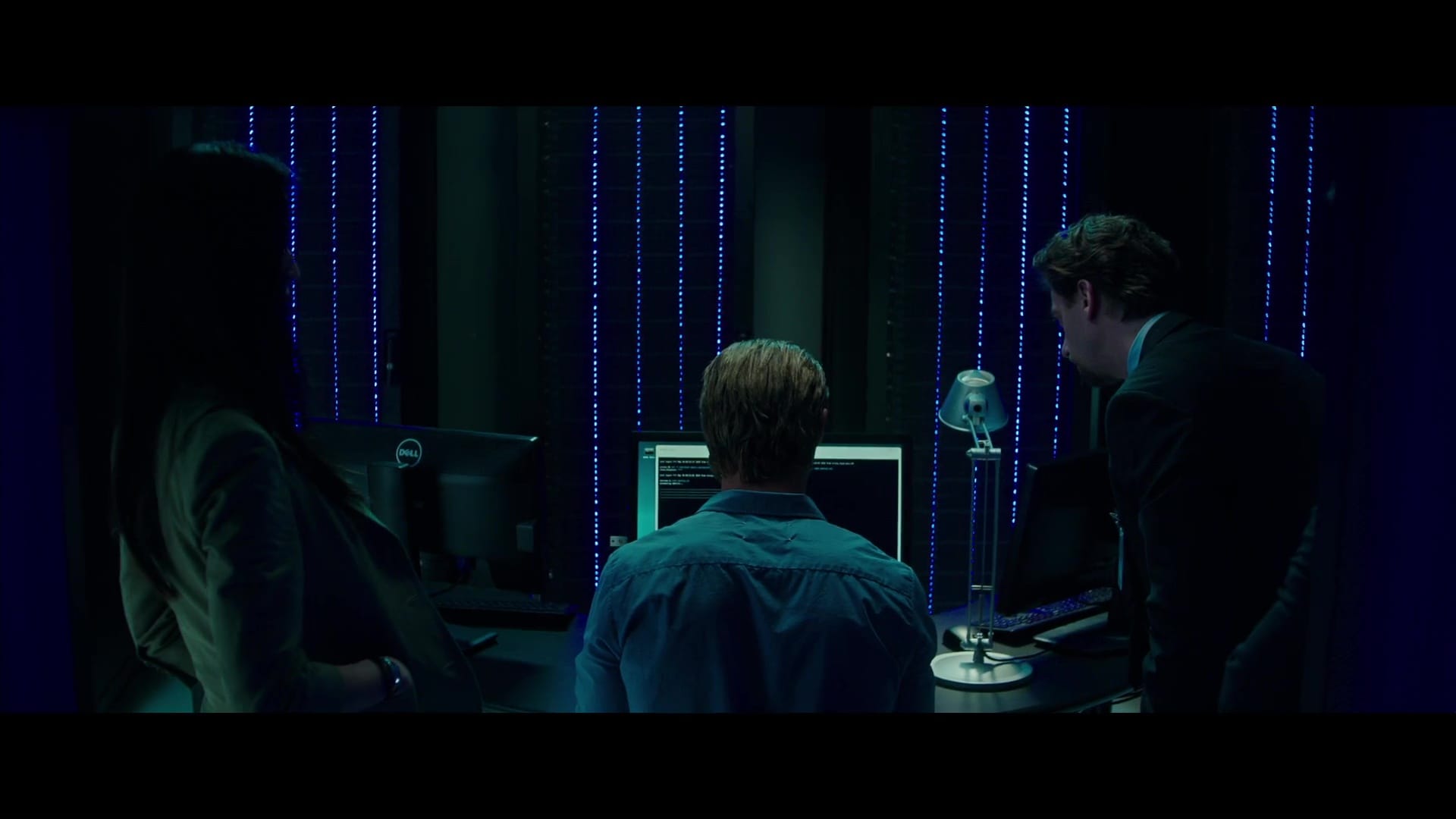
If you need a refresher, Blackhat is the one where Chris Hemsworth is also a pure-hearted digital citizen recruited for a mission well above his pay grade – though in this case he’s not a gamer but a genius hacker sprung from federal prison to assist the FBI in tracking down a malevolent cyber-criminal who’s just triggered a near-meltdown in a Chinese nuclear reactor by infiltrating its mainframe. Six years after the folly of Mann’s Dillinger thriller Public Enemies, this was supposed to be the director’s return to big, brooding contemporary thrillers – and technically I guess it is, though rather than a companion piece to Manhunter and Heat we get this glum, ugly cat-and-mouse picture told entirely from the side of the heroes; the villain they’re chasing turns out to be entirely devoid of personality, and disappointingly easy to dispatch.
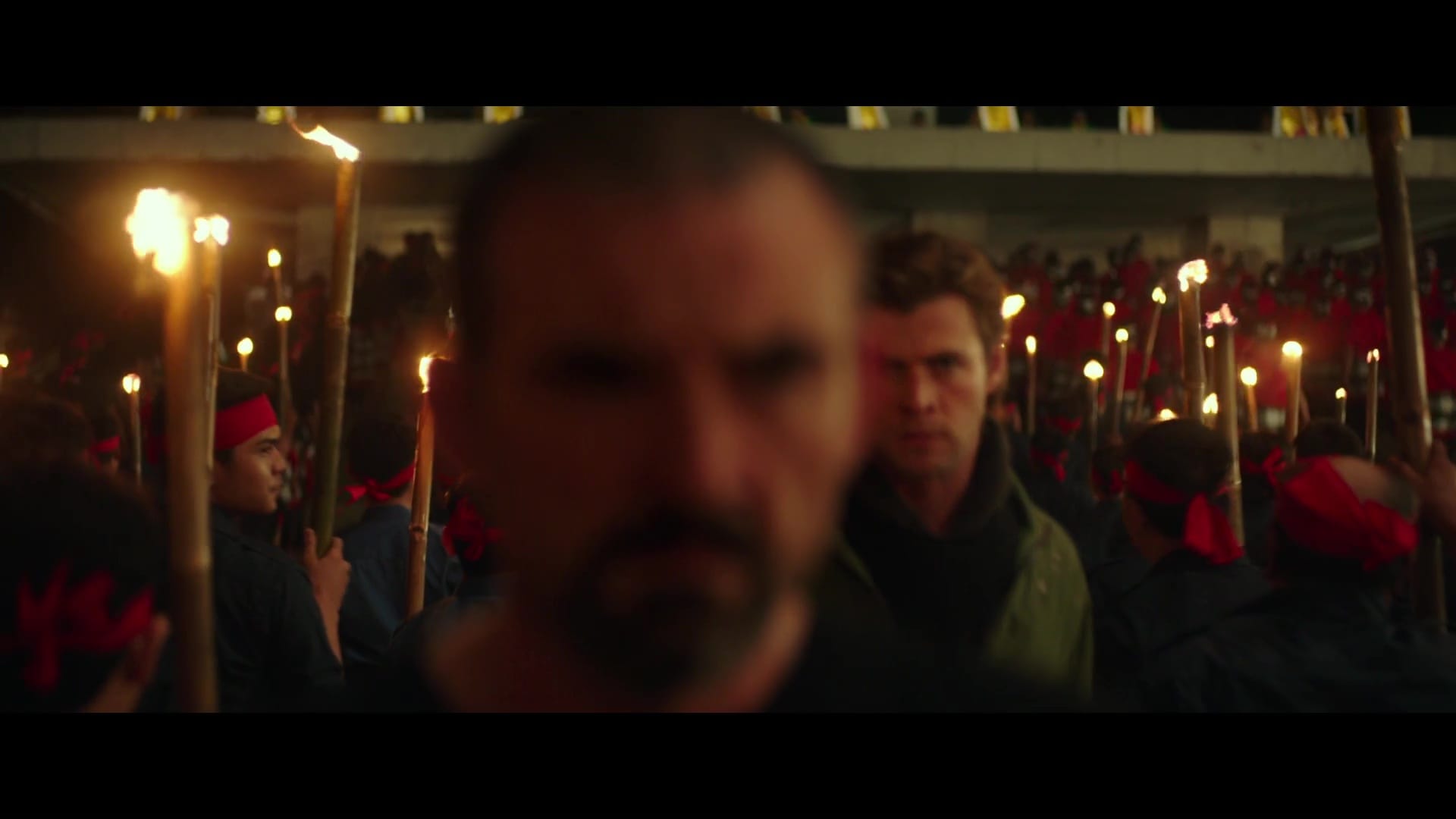
Still, I was excited to revisit the film in Arrow’s new 4K edition: Maybe a second viewing would reveal untold depths in the characters or the movie’s world? Maybe the international cut or the long-lost director’s cut – included on its own Blu-ray disc in a negotiation that delayed the release of the disc from its original spring street date – would reconfigure the film and restore its potency? Well, not so much. Blackhat is still a bleak, blurry serving of empty swagger, with a miscast Hemsworth and a fetishized Tang Wei staring at screens and trading coder talk while violence erupts all around them; sometimes those eruptions of violence are compelling, especially once the film picks up speed in the third act, but until then it’s a long, long walk to the fireworks factory.
Mann rarely contributes to the special editions of his movies – he’s barely a presence in the archival featurettes produced for the original disc release – so the Blackhat supplements are a little on the thin side. Arrow offers a new audio commentary from critics Max Evry and Bryan Reesman, a really interesting interview with DP Stuart Dryburgh about the film’s very specific digital cinematography techniques, and another featurette spotlighting production designer Guy Hendrix Dyas.

The 4K disc offers the theatrical and international cuts in a newly remastered UHD presentation, the extended range of HDR making every light source hotter and brighter: Background windows and streetlights crackle and twinkle as Hemsworth and his handlers race through public spaces, and server rooms look like they’re draped in Christmas LEDs. It’s probably what Mann had in mind all along, even as the additional detail plunges the darker sections into shadow and murk.
The director’s cut is presented on Blu-ray regardless of which set you buy; it moves the nuclear-plant meltdown from the film’s opening to its midsection, which does make Hemsworth’s trip into its freshly irradiated space feel a little more unsettling, but the recut doesn’t address the movie’s fundamental deficiencies of character, momentum or originality. So that’s a problem.
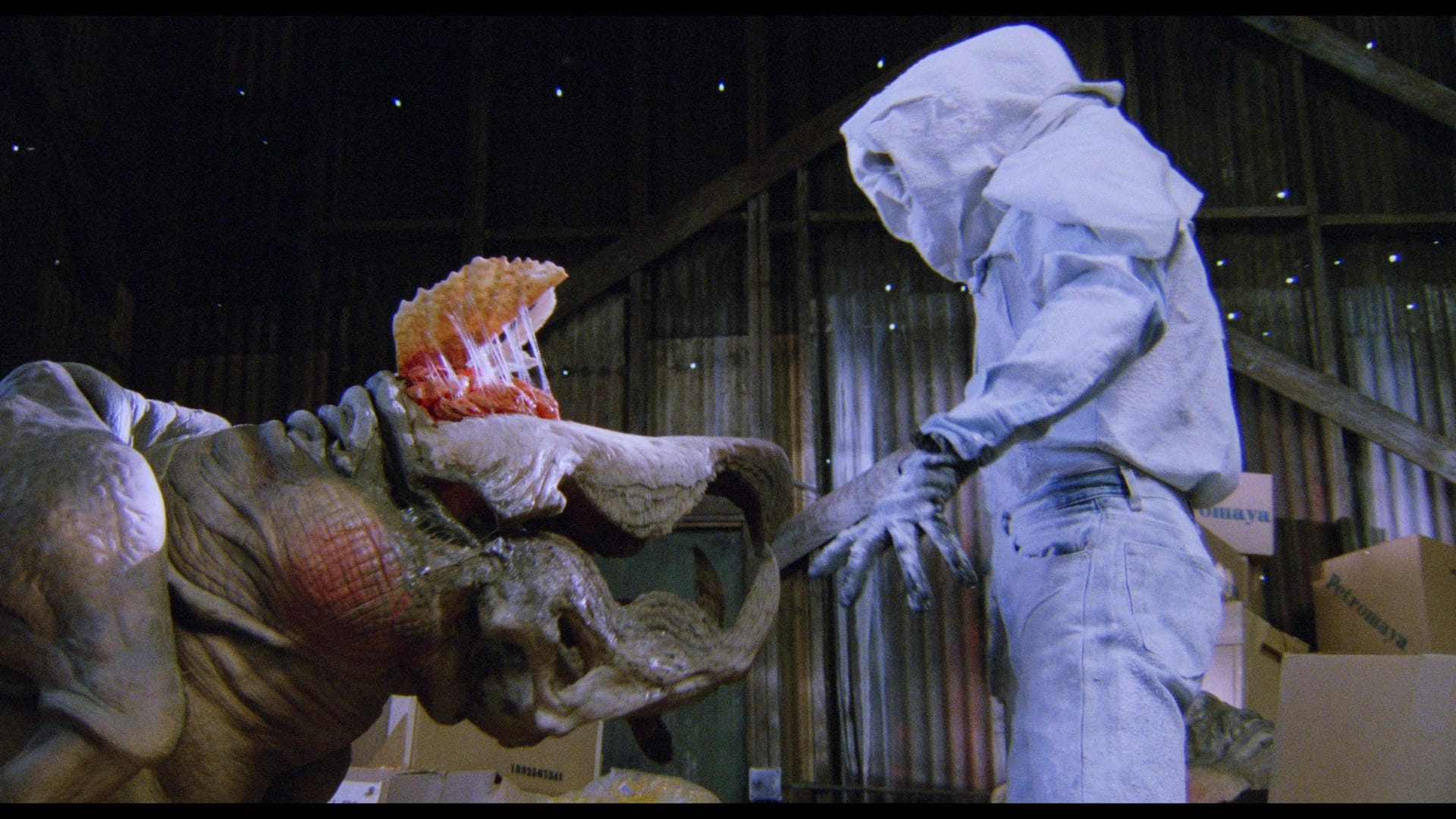
Speaking of deficiencies of character and originality, here’s Tremors 2: Aftershocks, a made-for-video sequel to Ron Underwood’s delightful 1990 monster comedy Tremors that flat-out admits it’s just repeating its predecessor’s actions, right down to replacing Kevin Bacon’s absent Val with another young buck, Christopher Gartin’s Grady Hoover. At least he has a decent reason to be Earl Bassett’s new sidekick, and at least Aftershocks gives us more time with Fred Ward as Earl, whose cranky competence in the face of each new wave of Graboids is the heart of this entirely unnecessary sequel.

But now that it’s been followed by five more films, each with less to say or do than the last – but all featuring that delightful Michael Gross! – Aftershocks can be appreciated as a fun hangout movie with endearing characters, sharper dialogue than one might expect and creature effects that are just inventive enough to compensate for the limited resources with which they’re executed.
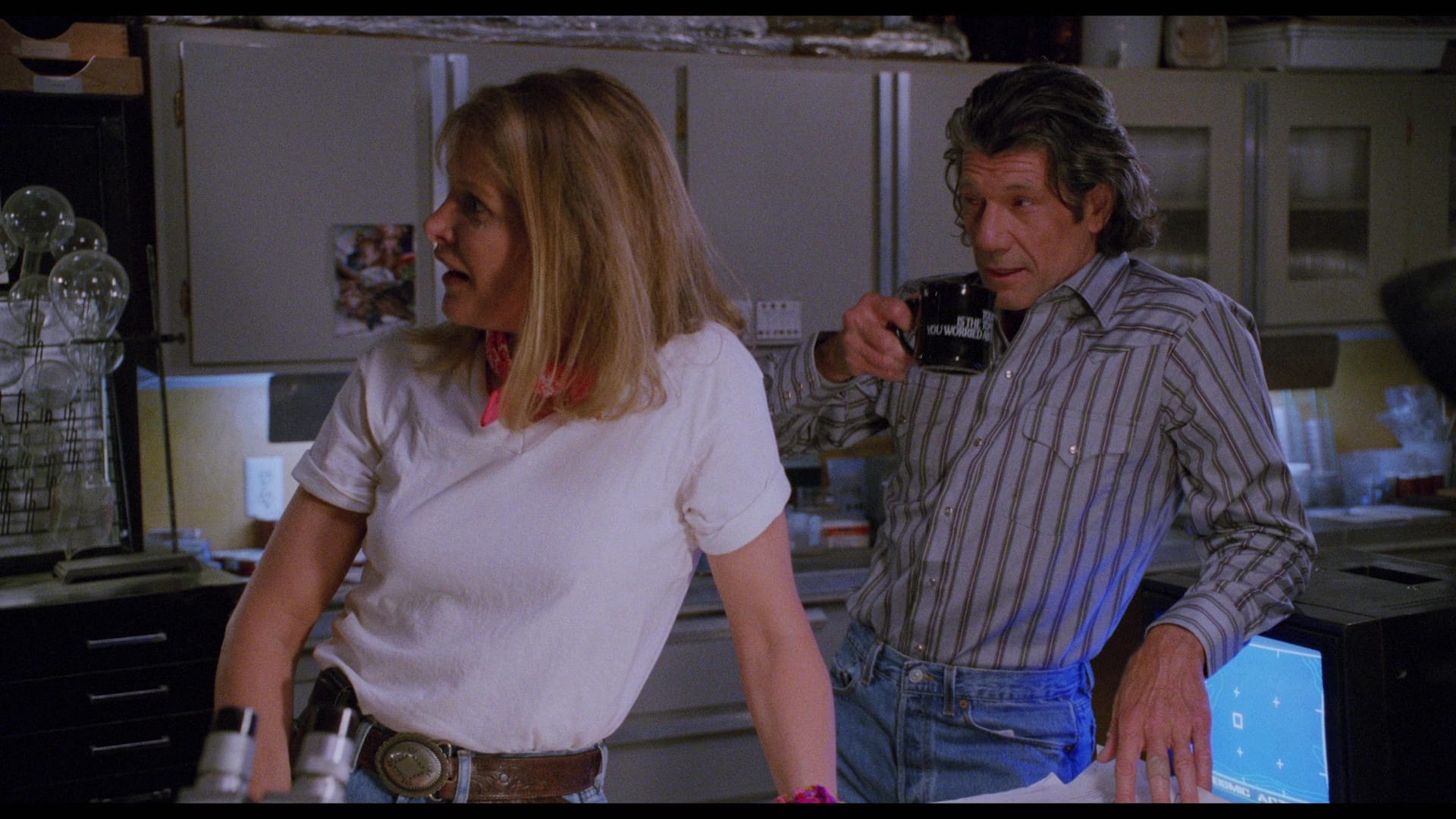
Also, Helen Shaver turns up as the science lady this time around, and makes a fun sparring partner for Ward. It’s her only appearance in the series, and Ward’s last; I like to imagine Earl and Dr. Kate are off enjoying their happily ever after somewhere quiet, screening their calls so as not to get pulled into another mess.

Arrow plays into the weird legacy of Aftershocks with some fun supplements: Director and co-writer S.S. Wilson and co-producer Nancy Roberts contribute a new audio commentary, discussing the challenge of making a direct-to-video sequel that still had to look and feel like a theatrical effort (among other things); there’s also a second track from Jonathan Melville, author of an unofficial guide to the franchise, which is as nerdy as you would want it to be.
The disc also includes new interviews with effects artists Phil Tippett and Peter Chesney, and the limited edition comes packaged with a booklet featuring essays on alternate script pitches and Universal’s DTV sequel division, the story of which is worthy of a feature documentary of its own.
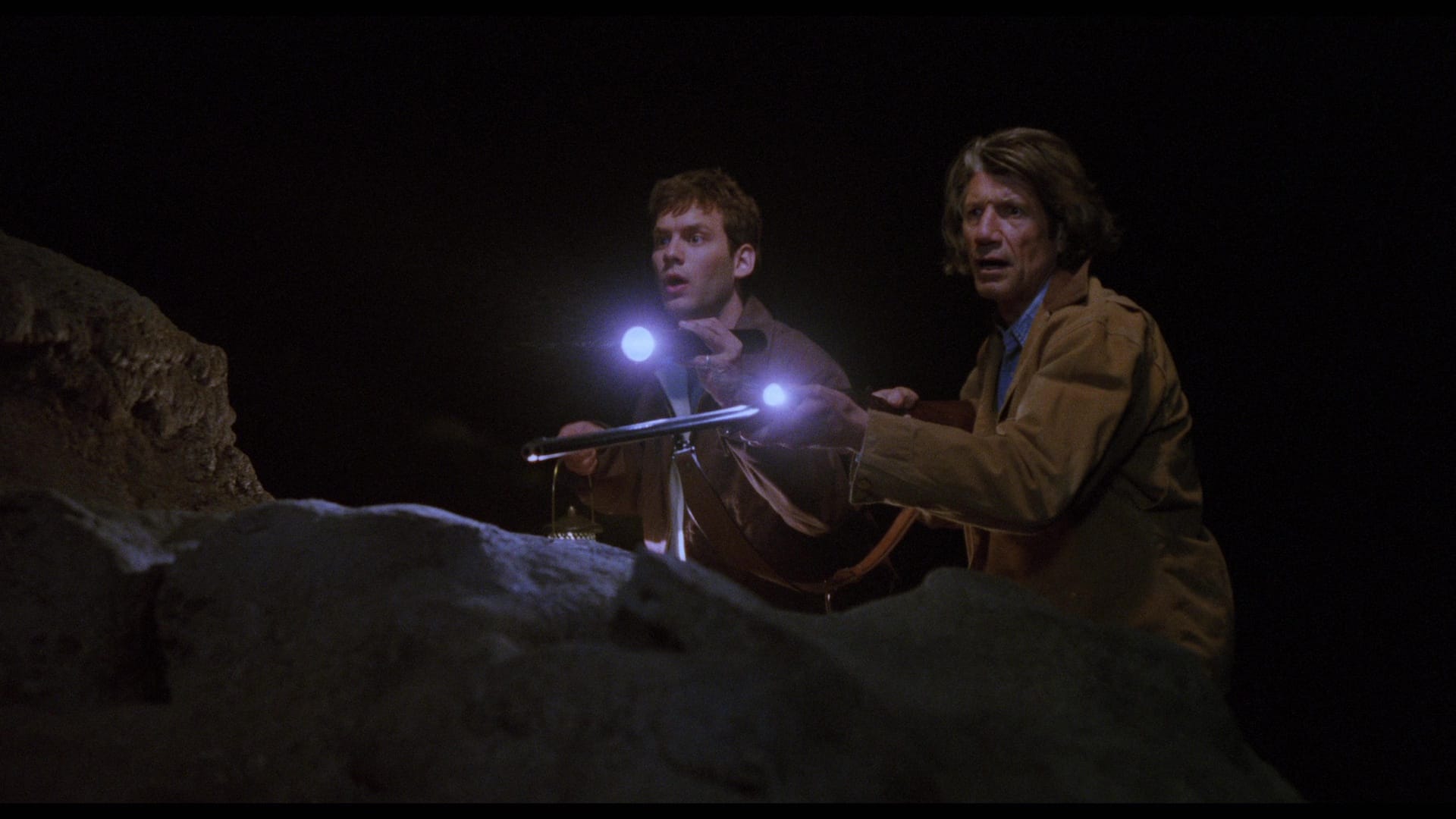
Is it a good movie? Nah, not really; the original Tremors, which Arrow released in a very good special edition a couple of years ago, remains the only one of these films I’ll revisit. But if you grew up watching it, and you’ve been waiting for a proper remaster of it, here you go.
Barbarella, Blackhat and Tremors 2: Aftershocks are all available in separate 4K and Blu-ray editions from Arrow Video in the US, and from Unobstructed View in Canada, which was kind enough to provide the review discs. (Thanks, Marc!)
In Sunday’s paid edition: WandaVision comes to disc so Disney can’t take it away from you. Also, I start rolling out my holiday gift guide recommendations. Upgrade that subscription so you don’t miss out!
And coming next week: Are you ready to go back to Titanic? James Cameron certainly is.
